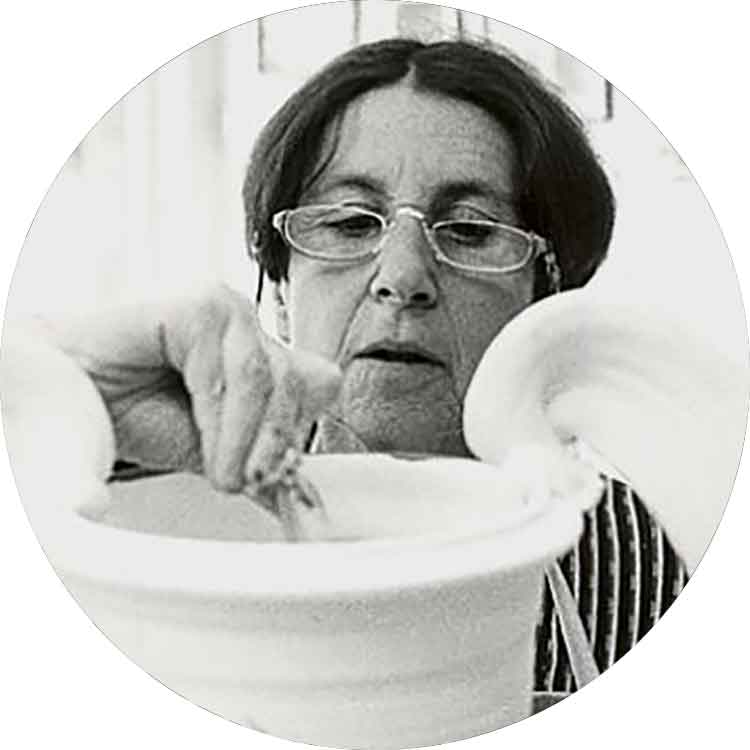Betty Woodman biografia

Betty Woodman, born Elizabeth Abrahams on May 14, 1930, in Norwalk, Connecticut, was a postwar American artist. Her artistic career, which began in the 1950s as a functional ceramist, evolved to achieve worldwide fame, with works that synthesize sculpture, painting, and ceramics into a unique and immediately recognizable visual language. Daughter of Minnie and Henry Abrahams, Betty Woodman grew up in a household imbued with progressive socialism and feminism. This background provided her with the tenacity needed to challenge the conventions of the time, such as when, as a teenager, she made her way into a male-dominated carpentry course to learn how to use a lathe. This early experience with craftsmanship led her to discover her passion for ceramics at the age of 16. She furthered her studies in this field at the School for American Craftsmen at Alfred University in New York, from 1948 to 1950."
His career has radically transformed over the years, moving from functional ceramic works to more abstract and exuberant creations. After the passing of her daughter Francesca in 1981, Betty Woodman's art underwent a further evolution, expressing a more abstract and reflective artistic language. Throughout her life, she held numerous solo exhibitions in prestigious institutions such as the Metropolitan Museum of Art in New York, the Institute of Contemporary Arts in London, and the Denver Art Museum.
Betty Woodman met George Woodman, also an artist, during a ceramics course in Boston in 1950. They married in 1953 and had two children: Francesca, a photographer, and Charles, an artist. The Woodman family spent a lot of time in Italy, a country that had a significant influence on Betty Woodman's work. In particular, a stay in Fiesole in the 1950s allowed her to learn traditional Italian techniques that enriched her artistic practice.
His works often reflected a fusion of historical and modern artistic traditions, exploring themes such as gender, modernism, craftsmanship, architecture, and domesticity. His creations, characterized by a bold use of color and a variety of cultural influences, have helped redefine ceramics as a contemporary art form.
Betty Woodman taught at the University of Colorado Boulder from 1978 to 1998, becoming an influential figure in art education. She received numerous accolades, including honorary doctorates from various institutions and the Brooklyn Museum Modernism Award for Lifetime Achievement in 2008.
Her work is included in more than fifty public collections, including the Metropolitan Museum of Art in New York, the Museum of Modern Art in New York, and the Whitney Museum of American Art. Betty Woodman passed away on January 2, 2018, leaving a lasting legacy in the world of contemporary art.




: invalid url input -->)